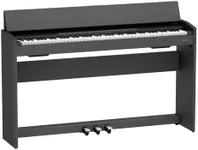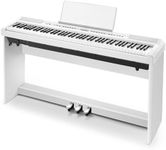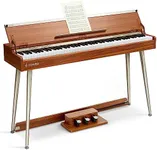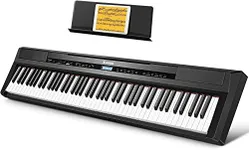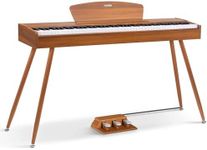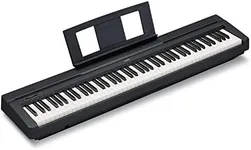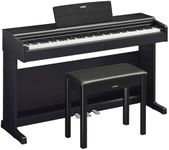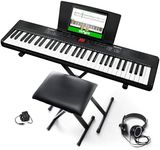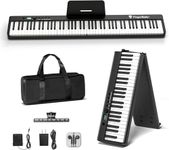Buying Guide for the Best Digital Pianos
Choosing a digital piano can be an exciting process, especially with so many options available. The key is to focus on what matters most for your playing style, skill level, and where you plan to use the piano. Understanding the main features will help you find an instrument that feels and sounds right for you, making your practice and performances more enjoyable.Key ActionKey action refers to how the keys feel when you press them, and it’s important because it affects your playing comfort and technique. Digital pianos can have weighted, semi-weighted, or unweighted keys. Weighted keys feel more like an acoustic piano and are best for classical or serious players, while semi-weighted or unweighted keys are lighter and may suit beginners or those who want a portable option. Think about whether you want a realistic piano feel or something lighter and easier to play for long periods.
Number of KeysThe number of keys determines the range of notes you can play. Full-size digital pianos have 88 keys, just like an acoustic piano, which is ideal for classical music and advanced pieces. Smaller models may have 61 or 76 keys, which can be enough for beginners, casual players, or those with limited space. Consider the type of music you want to play and whether you need the full range or can manage with fewer keys.
Sound QualitySound quality is about how realistic and rich the piano sounds are. This depends on the sampling technology and the quality of the built-in speakers. Some digital pianos use high-quality samples from real grand pianos, while others have simpler sounds. If you care about authentic piano tones, look for models with advanced sound engines and good speakers. If you plan to use headphones or external speakers, the built-in sound system may be less important.
PolyphonyPolyphony is the number of notes a digital piano can play at once. Higher polyphony allows for more complex music, especially when using the sustain pedal or layering sounds. Entry-level pianos may have 32 or 64-note polyphony, which is fine for simple pieces, while more advanced models offer 128 or more, which is better for intricate music. If you play fast, layered, or classical music, higher polyphony is helpful.
PortabilityPortability refers to how easy it is to move the piano around. Some digital pianos are lightweight and compact, making them easy to transport or store, while others are heavier and designed to stay in one place. If you need to move your piano often or have limited space, a portable model is a good choice. If it will stay in one spot, a larger, more robust model may offer better sound and feel.
ConnectivityConnectivity options let you link your digital piano to other devices, such as computers, tablets, or audio equipment. Common connections include USB, MIDI, and audio outputs. If you want to record music, use learning apps, or connect to external speakers, check for the right ports. Think about how you plan to use your piano and whether you need these features.
Built-in FeaturesBuilt-in features can include things like metronomes, recording functions, different instrument sounds, and learning tools. These extras can make practice more fun and productive, especially for beginners. Decide which features are important for your learning or playing style, and look for a piano that offers them without being too complicated.
